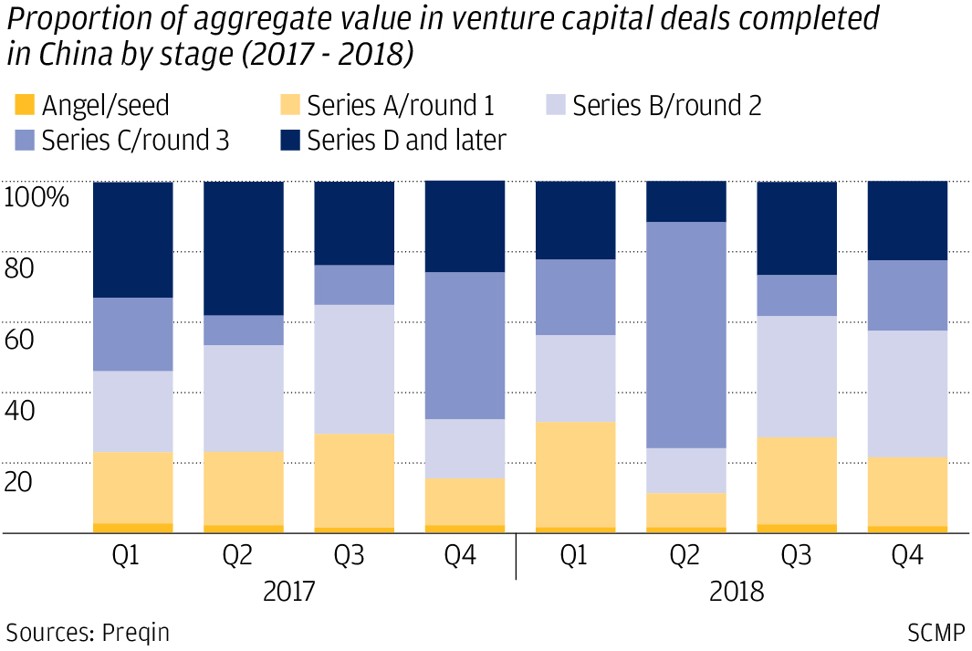
Hong Kong’s limited partnership regime may attract funds to set up domicile, boosting city’s role as Greater Bay Area private equity hub
- Despite private equity managers raising and advising capital in the city, none uses a Hong Kong fund structure and opt instead to domicile in Cayman
- Changes to limited partnership regime could bring more funds and managers to Hong Kong, and keep systemic risks in check, lawyers and analysts say
The Hong Kong government’s legal infrastructure to promote the city’s private equity industry may just work, encouraging more funds to set up domiciles locally and augment its role as a centre for private capital in the “Greater Bay Area”, according to fund managers and analysts.
PE and VC firms had close to zero interest in setting up funds in Hong Kong due to the limited options of the fund structure available to managers and investors, and an outdated limited partnership regime. The existing limited partnerships ordinance does not cover capital distribution, and confidentiality issue that are pertinent to PE funds.
That is about to change, after the city’s financial secretary sought to introduce a limited partnership regime in his FY2019 Budget that is catered to PE funds, as part of the government’s move to promote the city’s asset management industry.
A limited partnership regime provides the benefit of being tax neutral, which means the structure does not lead to a duplicative layer of taxes borne by investors. Additionally, it also provides investors with significant contractual flexibility in structuring their relationship as partners.
The government’s focus on a limited partnership regime reflects partly on its desire to better position Hong Kong to compete against Singapore for a greater share of the Asia PE and asset management industry, said Mayer Brown’s partner Steven Tran in Hong Kong.
“The overwhelming preference for PE and venture capital firms who manage and advise capital from Hong Kong is to use a Cayman LP structure for their fundraising and fund management purposes … It’s difficult to see any way in for Hong Kong-domiciled fund structures [to break Cayman dominance] unless meaningful changes are made to the current regime,” said Tran.
An onshore fund regime would also help investors ward against systemic risks, said Orrick’s partner Scott Peterman.
“As the internationalisation of the renminbi continues, regulators in both Beijing and Hong Kong would be interested in keeping track of capital inflow and outflow into and out of Hong Kong, and this means that regulators would be encouraged to see more funds domiciled locally rather than funds domiciled offshore,” said Peterman.
In a separate development, in the “Outline development plan for the Guangdong-Hong Kong-Macau Greater Bay Area” announced in February, a key focus in the authorities’ goal in developing the bay area into an international financial hub is on developing Guangzhou into a private equity “trading market”.
Private equity managers generally interpret “trading market” as referring to a secondary market for PE, one that facilitates investors’ exit from their portfolio companies, rather than a primary market for raising funds.
Lin Min, a founding partner of Newquest Capital Partners, said in general PE secondary transactions – whereby existing investors of a PE fund sell off their portfolio companies to another manager to meet liquidity needs – are often privately-negotiated deals that are not suited for an exchange-liked trading market.
But “the need for further developing a private equity secondary market has definitely caught the attention of the governments in the GBA. To promote the PE sector in the region, we need more types of transactions and participants,” she said.
In 2018, about a quarter of all exit transactions by Chinese private equity and venture capital funds were done through initial public offerings, according to data from Zero2IPO Research. When the stock market underperformed, a PE secondary market could potentially provide investors with a better alternative to cash out, proponents have argued.
“Hong Kong’s role in the Greater Bay Area could be in monetising the innovation and talent in southern China through our private equity and venture capital onshore fund vehicles, and our stock exchange. Hong Kong needs access to the GBA’s engineering base to participate in the innovation and technology development of the GBA meaningfully. It should be a symbiotic relationship,” said Peterman.


